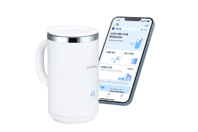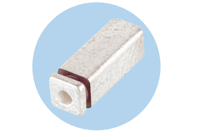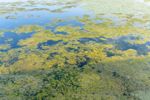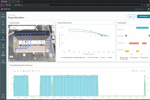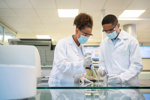Instrumentation
PRODUCTS
-
Portable IoT Drinking Water Quality Tester
-
When cost, size, and stability are important, look to Knowles Precision Devices’ offering of ceramic resonators.
-
TR-35 is Arcoplast's suspended lay-in ceiling panel grid system designed for use in high-demand wet and/or dry cleanrooms that typically have toxic or sterile environments.
-
standardPOD - Immediately Available For Sale
- 24’ Wide POD Cleanroom
- 1,000 sq. ft. ISO 7 Area including Airlocks
- Built, Tested and Ready to Ship
-
The AMP4032A solid-state, high-power amplifier features an operating frequency range of 18 to 26.5 GHz and delivers a power output of over 12 Watts at Psat and a minimum of 10 Watts at P1dB.
WHITE PAPERS AND CASE STUDIES
-
Proactive WWTP Design And Innovation Improves Health Of Chesapeake Bay Watershed
Read about the $568 million, decade-long upgrade of a Water Pollution Control Plant that would expand the plant’s capacity from 30 mgd to 40 mgd while also reducing nitrogen and phosphorous to the limit of technology.
-
RWD's Significance In The Largest FDA-Funded IOL Study Of Pediatric Patients
With FDA grant support, the American Academy of Ophthalmology and Verana Health conducted the largest real-world study to date on intraocular lens (IOL) use in pediatric cataract patients.
-
Getting A Jump On Pump Maintenance To Reduce Costs And Improve Resilience
To improve pump maintenance and service to 418,000 in and around Wellington, Wellington Water trialed Info360 Insight from Autodesk as part of a solution with Stantec.
-
From Lab-Scale To Tox-Batch: A Novel Vascular Calcification Inhibitor API
A leading pharma company developed a small molecule drug candidate to treat vascular calcification disorders using an 8-step synthetic process. Explore the chemical development for non-GMP and GMP manufacturing.
-
Authentic Engagement: Reaching Underserved Lupus Patients
By partnering with the ICLF, see how we were able to gain access to and build trust with influential community leaders and advocates within the African American communities located near study sites.
-
Symmetry Surgical Uses Software To Enhance Quality
Symmetry Surgical enhances operations and quality management using software to improve efficiency, compliance, and data-driven decisions while producing over 2 million surgical devices annually.
-
NeuraLace Doubles Clinical Trial Enrollment & Improves Participant Compliance With EDC & ePRO
Find out how one company dedicated to producing innovative non-invasive chronic pain therapies was able to engage its patients in new ways.
-
Unified Platform Supports Rapid Implementation Of Rescue Study
Explore how these integrated solutions helped an emerging biopharma to implement a plan for study build and migration with minimal disruption to sites.
-
How Cara Therapeutics Increased Compliance And Reduced Study Team Burden
Delve into the partnership that helped Cara Therapeutics achieve a significant milestone in their clinical research efforts to transform the lives of chronic pruritus patients.
-
Discover A Reference Control Alternative To HIV+ Donor Samples
A Fortune 100 pharmaceutical company found success in addressing their HIV treatment research challenges through a partnership that provided them with a p24-expressing, non-infectious synthetic T cell mimic.
-
Specifying Performance Over Equipment Quickly Reduces THMs In The Colorado Springs' Distribution System
Colorado Springs, Colorado, enjoys some of the highest quality drinking water in the country, with most of its water coming from high country snowmelt. Despite its pristine origin in the mountains, the water at the far end of the distribution system is prone to developing trihalomethanes (THMs) due to low turnover and high water age.
-
Choosing An R&D Data Management Platform For Novel Antibody Therapeutics
Uncover how this collaboration ensured the implementation of a robust electronic system that streamlined R&D operations, increased data integrity, and ultimately supported the development of novel antibody-based therapeutics.
NEWS
-
Be Part of Photonics Future: CIOE 2025 Visitor Registration Live Now!4/9/2025
The 26th China International Optoelectronic Exposition (CIOE 2025) is set to take place from September 10–12, 2025, at the Shenzhen World Exhibition & Convention Center, spanning 240,000 square meters of exhibition space.
-
Researchers Discover Smarter Way To Recycle Polyurethane8/16/2024
Researchers at Aarhus University have found a better method to recycle polyurethane foam from items like mattresses. This is great news for the budding industry that aims to chemically recover the original components of the material – making their products cheaper and better.
-
Stoichiometric Crystal Shows Promise In Quantum Memory7/7/2025
For over two decades, physicists have been working toward implementing quantum light storage—also known as quantum memory—in various matter systems.
-
Plants Don't Just Feel The Heat – They Decode It Through A Molecular Network6/13/2025
In a new framework that could reshape how we engineer crops for a warming world, scientists have revealed that plants don't rely on a single "thermometer" to sense temperature.
-
Delaware State Dental Society Endorses Five iCoreConnect Products10/9/2024
iCoreConnect Inc. (NASDAQ: ICCT) (“iCore” or the “Company”), a leading provider of cloud-based software and technology solutions, announced a new endorsement agreement with the Delaware State Dental Society (DSDS).
ABOUT
Instrumentation
The science of measuring and controlling variables is termed instrumentation. As the name suggests, the process involves using a wide variety of instruments. These are classified as any device that can measure amounts that are physically quantifiable. These instruments do not have to be extremely complex in design. For example, the ruler is an instrument to measure distance, and a simple thermometer measures temperature.
Instruments specific to petrochemical processing include platinum Resistance Temperature Detectors (RTD’s), P/I Converters, many types of level meters, chromatographs, and continuous gas analyzers. These instruments are essential to the day to day instrumentation at petrochemical plants, as it is impossible to gauge to the necessary extent by estimation alone. Human error is inevitable, but an instrument can easily be calibrated or replaced.
Now that you understand the definition of and tools used in instrumentation, you should also understand the necessity of it. Temperature and pressure meters serve to ensure that the environment stays safe for both the chemicals being processed and the employees of the plant. Heat is a very well-documented activator in chemical reactions. If the temperature rises to unusual levels, this could spark an undesired chemical reaction that could prove catastrophic. The flow meter must measure how much oil is leaving the refinery, as it is a very volatile substance. Analytical instruments, such as the chromatograph, analyze the chemical make-up of the refined oil. This allows for the opportunity to make sure that the chemical make-up is correct, giving evidence that the process was correctly completed at all stages of refinement.

